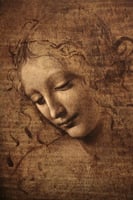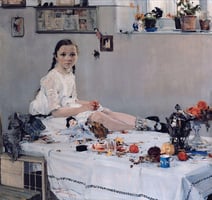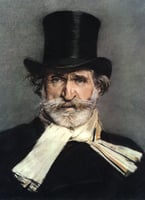Leonardo da Vinci (1452–1519) was an Italian polymath who is widely considered one of the most...
The Beauty and Power of Michelangelo's Art
Michelangelo di Lodovico Buonarroti Simoni (6 March 1475 – 18 February 1564) was an Italian sculptor, painter, architect, and poet of the High Renaissance who exerted an unparalleled influence on the development of Western art.
Michelangelo is considered to be one of the greatest artists of all time. His artistic versatility was of such a high order that he is often considered a contender for the title of the archetypal Renaissance man, along with his rival and fellow Italian Leonardo da Vinci.
A number of Michelangelo's works of painting, sculpture and architecture rank among the most famous in existence. His output in these fields was prodigious; given the sheer volume of surviving correspondence, sketches and reminiscences, he is the best-documented artist of the 16th century. He sculpted the Pietà and David, two of the most famous sculptures in the world. As an architect, Michelangelo pioneered the Mannerist style at the Laurentian Library. At the age of 74, he succeeded Antonio da Sangallo the Younger as the architect of St. Peter's Basilica.
Michelangelo was born on 6 March 1475 in Caprese, near Arezzo, Tuscany. For several generations, his family had been small-scale bankers in Florence but his father, Lodovico di Leonardo Buonarroti, had humbler beginnings, working as a magistrate and administrator for the local council. He had six brothers, who all died in infancy, and a sister.
At the age of thirteen, Michelangelo was apprenticed to Domenico Ghirlandaio, one of the leading artists of Florence. Ghirlandaio had many apprentices but Michelangelo stood out from the rest and soon became a favorite of the family. While at Ghirlandaio's workshop, Michelangelo was introduced to the works of the leading sculptors of the day, such as Donatello and Brunelleschi.
In 1489, at the age of fourteen, Michelangelo was sent to the Medici court where he was to continue his apprenticeship under the sculptor Bertoldo di Giovanni. During this period, Michelangelo produced a number of small works of sculpture and painting. Among the most notable of these works are the “Madonna of the Steps” and the “Battle of the Centaurs”.
In 1492, Michelangelo returned to Florence and was given his own studio. He soon established himself as a leading sculptor and painter in the city and became a favorite of the Medici family. His most notable works from this period include the “Pietà” and the “David”.
In 1505, Michelangelo was commissioned to paint the ceiling of the Sistine Chapel in Rome. The work was to take four years to complete and was one of the most ambitious projects ever undertaken by an artist. The frescoes depict a number of biblical scenes, including the Creation of Adam and the Last Judgment. The Sistine Chapel frescoes are considered to be some of Michelangelo's greatest works and are among the most renowned works of Western art.
During the later years of his life, Michelangelo was mainly occupied with architecture. He designed the dome of St. Peter's Basilica in Rome and built the Laurentian Library in Florence. He also designed a number of tombs and palaces, including the Palazzo dei Conservatori in Rome and the Palazzo Medici Riccardi in Florence.
Michelangelo died in Rome on 18 February 1564 at the age of 88. He was buried in the Basilica of Santa Croce in Florence.




